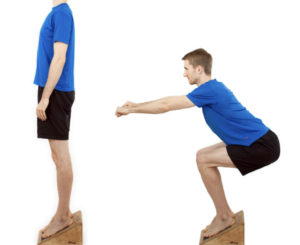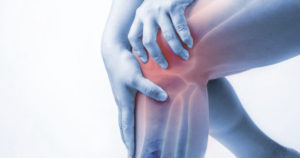

CORE Physical Therapy In Omaha Explains…
By Dr. Mark Rathjen PT DPT CSCS
CORE Physical Therapy Co-owner
17660 Wright Street Suites 9/10
Omaha NE
402-933-4027
Eccentric activities and strengthening have long been utilized to remodel and strengthen tissue. Researched for many decades, it has been used to increase tissue strength, collagen and treat tendonopathies as well. Eccentric training involves contraction and lengthening under tension.
“We conclude that, when matched for either maximum load or work, similar increase in muscle size is found between ECC and CON RT. However, such hypertrophic changes appear to be achieved through distinct structural adaptations, which may be regulated by different myogenic and molecular responses observed between lengthening and shortening contractions.” https://www.ncbi.nlm.nih.gov/pmc/articles/PMC5495834/
There are many physiological benefits to working on eccentric training to remodel and strengthen tissue during and injury, we Suggest you find a physical therapist in Omaha that can guide and help with sports performance rehabilitation. It’s imperative to find a sports physical therapist who understands athletes. Thats what we do at CORE Physical Therapy
We understand athletes…We are Athletes… This is who we are, this is what we do.
At CORE Physical Therapy in Omaha, We specialize in the treatment of athletes. We have worked with athletes for a combined 30 years. CORE was established in 2015 by Dr. Mark and Dr. Claire Rathjen is family owned and operated.
We are proud to serve the greater Omaha metro area.
For More information, Please feel free to contact us http://coreomaha.com/contact/
Please feel free to follow us at https://www.facebook.com/COREomaha/
To get started http://coreomaha.com/getting-started/
For more Blog information http://coreomaha.com/blog/
Youtube Account linked below.
https://www.youtube.com/channel/UCVg8OSN5h-i1n_ykw1Gvahg?view_as=subscriber
Effects of isometric, eccentric, or heavy slow resistance exercises on pain and function in individuals with patellar tendinopathy: A systematic review
- PMID: 29972281
- DOI: 10.1002/pri.1721
Abstract
Background and purpose: The purpose of this study is to evaluate current evidence and provide a review on the effects of isometric, eccentric, or heavy slow resistance (HSR) exercises on pain and function in individuals with patellar tendinopathy (PT).
Methods: Academic journals from CINAHL, Embase, MEDLINE, Scopus, SPORTDiscus™, and The Cochrane Library were searched from inception to August 2017. Screening of reference lists was also performed. Human interventional studies investigating outcomes of pain and function in PT using either isometric, eccentric, or HSR training exercises were included. The McMaster Critical Review Form-Quantitative Studies was used to assess for risk of bias. Levels of evidence were obtained using the National Health and Medical Research Council (NHMRC) evidence hierarchy. The NHMRC Body of Evidence Framework was utilized to formulate recommendations for clinical practice. Extraction of data was performed by two independent reviewers according to predefined data criterion, data were then tabulated, and a descriptive, qualitative data synthesis was performed.
Results: Fifteen studies (3 isometric, 2 HSR, and 10 eccentric) were included for this review. Mean quality score across all studies was 81.6% (range 70% to 93%). Nine studies were of high quality, whereas six studies were of moderate quality. Nine studies were randomized controlled trials, which provided good Level II evidence; four studies were of satisfactory Level III evidence; and two studies were case series (Level IV evidence).
Conclusions: Findings from isometric exercises can be trusted to guide clinical practice (Grade A), whereas eccentric exercises can be trusted to guide clinical practice in most clinical situations (Grade B). It is recommended that HSR exercises should be applied carefully to individual clinical circumstances (Grade C) and interpreted with care. Isometric exercises appear to be more effective during competitive seasons for short-term pain relief, whereas HSR or eccentric exercises are more suitable for long-term pain reduction and improvement in knee function.
Keywords: exercise; pain; patella; tendinopathy.
© 2018 John Wiley & Sons, Ltd.
Similar articles
-
Sports Med. 2013 Apr;43(4):267-86. doi: 10.1007/s40279-013-0019-z.PMID: 23494258 Review.
-
Br J Sports Med. 2018 Dec;52(24):1564-1574. doi: 10.1136/bjsports-2017-098913. Epub 2018 Aug 31.PMID: 30170996
-
Autologous growth factor injections in chronic tendinopathy.
J Athl Train. 2014 May-Jun;49(3):428-30. doi: 10.4085/1062-6050-49.3.06. Epub 2014 May 19.PMID: 24840581 Free PMC article. -
Clin J Sport Med. 2020 Jul;30(4):390-403. doi: 10.1097/JSM.0000000000000624.PMID: 29952842
-
Br J Sports Med. 2007 Apr;41(4):217-23. doi: 10.1136/bjsm.2006.032417. Epub 2007 Jan 29.PMID: 17261559 Free PMC article. Review.
